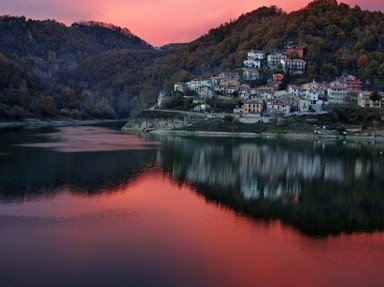Quiz Answer Key and Fun Facts
1. What is the deepest lake in the world?
2. She was a box office draw in the early '40s and box office poison by the '50s. Was she a Lake, a Pond or a Stream? First and last names, please.
3. Who usually gets the credit for discovering the Gulf Stream?
4. In 1846, a pharmacist from Utica, NY developed a formula which became a world-wide best seller (long after his death). What was his name?
5. 'Field and Stream' bills itself as the magazine for hunters and fishermen. When did it begin publication?
6. What is the international definition of the difference between a pond and a lake?
7. One of the most beautiful spots in England is the Lake District. Who was the famous English poet who was born, lived and died there?
8. Loch is the Scottish Gaelic word for lake, but is a loch a true lake?
9. We all know that Henry David Thoreau lived near and wrote about Walden Pond. Where is Walden Pond?
10. Everyone knows that Elvis Presley was born in Tupelo, Mississippi, but do you know what Tupelo was called before it became Tupelo?
Source: Author
Cymruambyth
This quiz was reviewed by FunTrivia editor
LeoDaVinci before going online.
Any errors found in FunTrivia content are routinely corrected through our feedback system.

